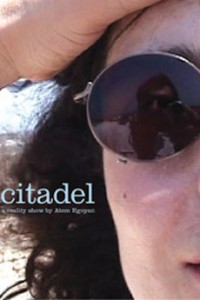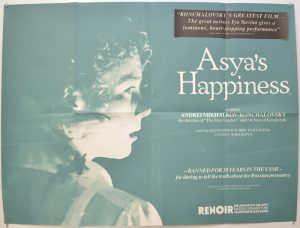From the Chicago Reader (December 3, 1999). — J.R.

El Valley Centro
Rating ** Worth seeing
Directed by James Benning.
El Valley Centro, James Benning’s latest feature, is a fairly minimalist effort consisting of 35 shots, each of them two and a half minutes long, filmed in direct sound with a stationary camera in California’s Central Valley. About halfway through I found myself, to my surprise, thinking about Joseph Cornell’s boxes, those surrealist constructions teeming with fantasy and magic — dreamlike enclosures that make it seem appropriate that Cornell lived most of his life on a street in Queens called Utopia Parkway.
Benning’s films are typically about farmland, deserts, or industrial landscapes. The two features preceding this one are Four Corners, shot around the point where New Mexico, Arizona, Colorado, and Utah meet, and Utopia, shot in desert country starting in Death Valley and heading south across the Mexican border. Benning hails from Wisconsin, and most of his early films are made up of midwestern landscapes. He moved to the west coast several years ago to teach at Cal Arts, and ever since he’s been shooting various kinds of midwesternlike emptiness and decay in the western states. Two years ago he started offering free December screenings of his new films at a private loft in Wicker Park, when he was back for the holidays, and apart from screenings at Cal Arts, these have been the films’ American premieres. Read more

Atom Egoyan’s new film, shot with a mini DV camera, shows Egoyan; his wife, actress Arsinee Khanjian; and their son, Arshile, vacationing in Beirut, where Khanjian lived as a child. Though an essay film, it’s made poetic by Egoyan’s thoughtful narration and subversive by its shift to fiction in the final sequence (which is also the title sequence). It’s also one of the best things Egoyan has done since Calendar (1993), which it resembles in its closing stretches. 93 min. (JR) Read more
From the Chicago Reader (July 1, 1988). — J.R.


Originally entitled The Story of Asya Klachina, Who Loved a Man but Did Not Marry Him Because She Was Proud, Andrei Konchalovsky’s remarkable 1967 depiction of life on a collective farm, one of his best films, was shelved by Soviet authorities for 20 years, apparently because its crippled heroine is pregnant but unengaged and because the overall depiction of Soviet rural life is decidedly less than glamorous. (The farm chairman, for instance, played by an actual farm chairman, is a hunchback.) Working with beautiful black-and-white photography and a cast consisting mainly of local nonprofessionals (apart from the wonderful Iya Savina as Asya and a couple others), Konchalovsky offers one of the richest and most realistic portrayals of the Russian peasantry ever filmed, working in an unpretentious style that occasionally suggests a Soviet rural counterpart to the early John Cassavetes. Many of the men in the cast relate anecdotes about war and postwar experiences that are gripping and authentic, the interworkings of the community are lovingly detailed, and the handling of the heroine and her boyfriends is refreshingly candid without ever being didactic or sensationalist. Episodic in structure and leisurely paced, the film is never less than compelling. Read more




